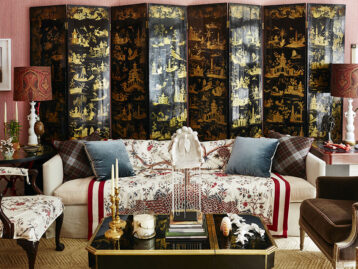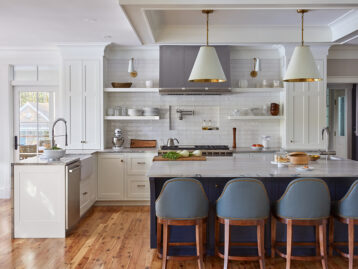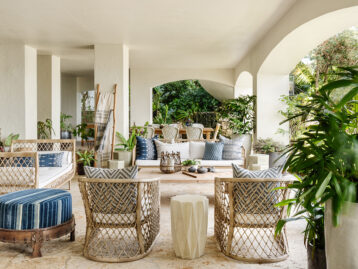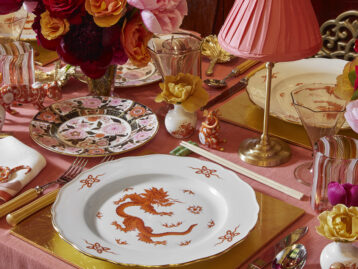We spend a third of our lives in bed (and let’s face it, even more over the last year), so shouldn’t all those hours be comfortable? We’d certainly like them to be. We’re excited to share that we’re launching an all-new assortment of bedding on Chairish, from some of the top brands out there. And to figure out the best way to put our bedrooms together, we asked nine incredible designers for their top bedding tips. Whether it’s the type of bedding they use or the color combinations they work with, these are their ideas for how to make the bedroom a truly restful retreat.

Location, Location, Location
It’s not just a rule for real estate. Designer Breeze Giannasio believes in letting the location do the talking when it comes to selecting bedding. “In a tonal, textural Hawaii project, I may lean towards natural-toned linen bedding that breathes in the heat, whereas in a preppy uptown project, crisp white hotel bedding with just a small graphic punch may do the trick,” says Giannasio. “I let layers do the talking if more color or pattern is needed, say, a long lumbar pillow and throw, leaving the bedding a bit more visually quiet. Function and feel should lead the charge always… What’s the climate? What’s the level of formality? What’s the vibe? You’ll find the answers you need if you ask the right questions.”

Fashion First
Designer Patrick Tennant of Interiors by Patrick thinks of fashion when it comes to bedding choices. “You can never go wrong with classic white for that luxury hotel feel, but personally I like my bedding to be a bit more eclectic,” he says. “I like to think of bedding as an outfit. You might have a pair of pants or a skirt and change up your top to create a completely different outfit. Often I like to do a contrasting pillowcase to the sheets, which is unexpected, or even a simple white fitted sheet with a patterned flat sheet and even a contrasting pillow. Lots of people think you need to buy a set of sheets and pillowcases but you often can buy them separately. There are so many variations on a theme you can have fun with. What is your bed going to wear today?”

Head(board) of the Class
In addition to sheets and duvets, headboards are an important part of the bedroom design equation as well. “If we keep the bedroom walls painted, we often incorporate a headboard upholstered with an exciting and durable fabric,” says designer Robin Pelissier. “This helps soften the space and also grounds the room. Additionally, a duvet cover with lightweight fill and cotton percale sheets are our go-to’s. This makes it simple to make the bed every morning. The desire on our end is to make the bed so scrumptious and inviting that it becomes your own little island where you can look forward to getting under the covers at the end of every day.”

First Comes Comfort
The duo behind design firm Lucas Eilers believes that the foundation of any bedding choice needs to be comfort. “First and foremost, bedding needs to be comfortable before you can address style,” says cofounder Sarah Eilers. “The foundation of an inviting bed is a premier mattress and sumptuous, percale sheets with a high thread count. I generally use white or ivory linens that coordinate nicely with any palette and then weave in color through a contrasting embroidery or appliqué that complements fun decorative shams and other patterns applied throughout the room.”
Shop the Style
Product_id 2877530 not found

Add a Pop of Color
Designer Laurie Blumenfeld-Russo uses bedding as a means of adding vibrancy to her spaces, playing with the colors she’s already chosen throughout the room. “For this project, our client loves navy, so it was a natural choice for the anchor color in her master bedroom,” Blumenfeld says. “To complement the Phillip Jeffries grasscloth, I chose clean, crisp white bedding to lighten the deep blue wall and bring a fresh feeling. I’m all about layering in a pop of color in my designs. Here I chose to bring in shades of blue for a tonal look — these include custom pillows I chose while in Vietnam, along with a custom pillow we designed using the same fabric as her window treatments for the salmon pink.
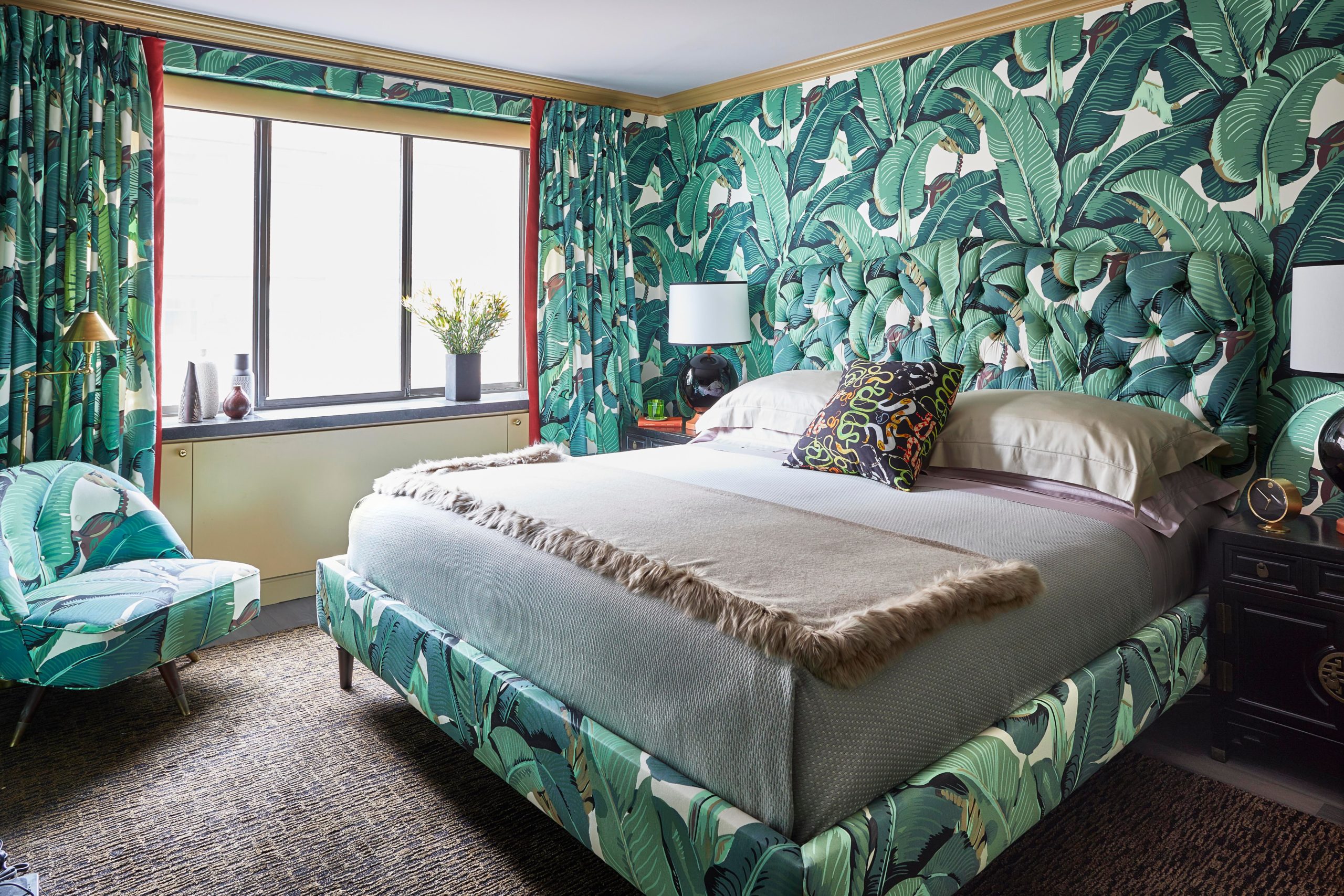
Save the Bed for Last
When it comes to Wesley Moon, bedding is the finishing touch for his room designs. “I always select the bedding last, once the rest of the room is put together and I know what it truly needs to feel complete,” he says. “Bedding is an opportunity to either calm the room or give it a needed pop — and the best part is that it’s not so permanent. It’s easy to change down the road or even alternate every week to suit your mood.”
Shop the Style
Product_id 2966181 not found
Product_id 2333222 not found

Thread Hot
For designer Paul Corrie, the tried-and-true bedding advice rings true: pay attention to thread count and invest well. It’s the most important number when it comes to bedding. As Corrie says, “For luxurious comfort, thread count is always at the top of our list when providing recommendations to our clients, and our ‘go to’s’ are typically Egyptian cotton or linen. I’m a big fan of continuing the home’s design story into the bedroom so I prefer sheets and bedding with pattern and color, whether they be subtle or bold.”

Throw a Punch
Designers Stuart Warner and Tim York of Warner York use throw pillows to add a sense of fun and energy to their designs. They’re a great way to dress up simply colored bedding without overwhelming the room. As the pair says, “we approach our bed designs using crisp white sheets and duvet covers and finish them off with fun throw pillows made with fabrics from Quadrille and trims from Samuel and Sons. Throws are often used to add a great punch of color as well.”

Be Chic with Sheets
Designer Andrea May really knows her stuff when it comes to bedding (see her exclusive laundry tips below for the proof). She’s a big believer in setting the right color scheme and making sure you select sheets that make you feel good. “One of the keys to a serene bedroom, I believe, is surrounding yourself with a palette that helps you wind down,” May says. “I also like to mix in art that sets a tone, such as this abstract calligraphy piece by Yomar Augosto. It feels lyrical, like a graphic lullaby, and it dialogues seamlessly with some of the art deco pieces in the space.”
“And then there are the practical — yet still pretty — trappings of a well-appointed bedroom, such as sheets. I prefer classic long staple white cotton percale sheets — crisp, cool, airy, and breathable in all seasons. When I jump into a bed made up with crisp percale sheets, I feel like I’ve just checked into a luxury hotel. Of course, some people like supima sheets, which are heavier, buttery soft, have a silkier hand, and get sueded over time.”
“Either way, percale or supine, I usually like to keep it simple, add a lightweight blanket, then a blanket cover or Matelassé over that and a comforter at the end of the bed. Light layers are perfect for adding or shedding as needed throughout the night. I bring in color and pattern in through Euro shams, decorative pillows and in the duvet cover, although I don’t like a Jenga mountain of pillows or anything too tricked-out. Life is complicated enough.”
Some Bonus Bedding Tips from Andrea May:
“A few more notes on washing linens because, well, I am a self-admitted sheet snob and maybe a little Type A:
- Wash sheets in warm water with mild detergent like the Laundress
- Hang sheets to dry or dry on low heat
- Pressing your sheets makes all the fibers go in one direction, creating that crisp “luxury hotel” bed experience
- Don’t use fabric softeners or optical whiteners on sheets
A few final words before bedtime: Room darkening shades or draperies are a do. Electronics are a don’t. White noise, yes. Blue light, no. Silk eye mask, definitely. Ear plugs, absolutely.”

































